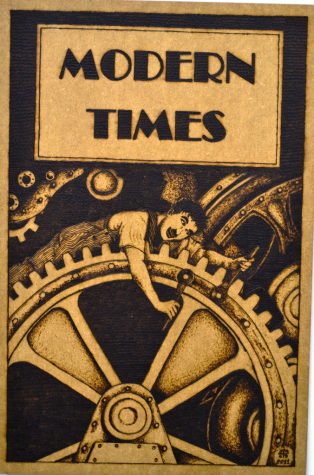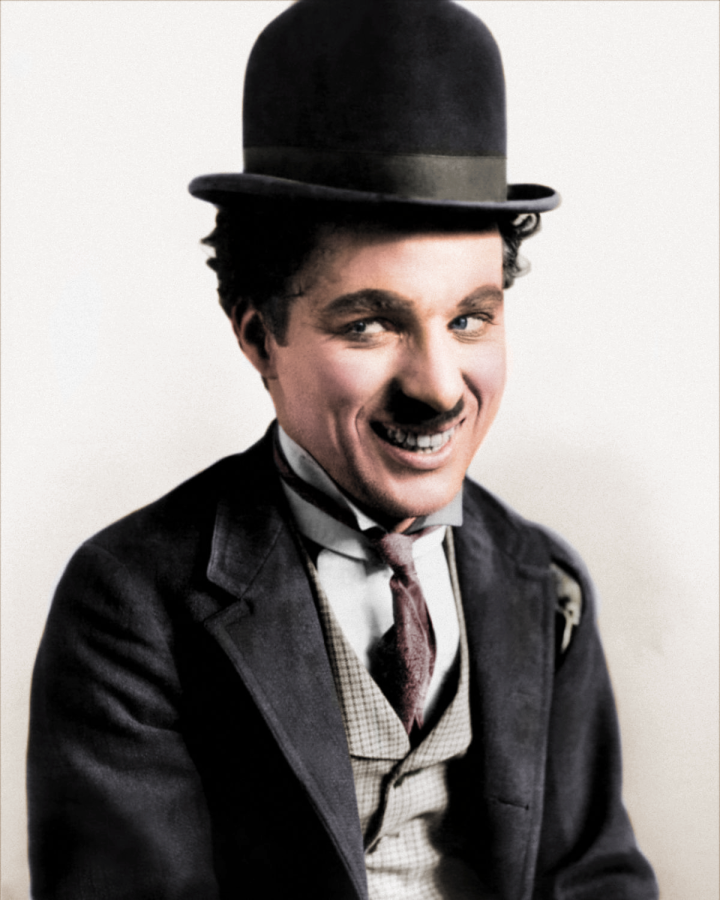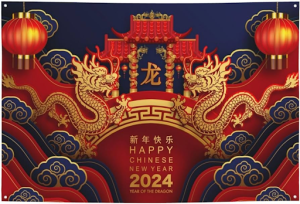Analyzing Charlie Chaplin’s “Modern Times”
November 3, 2021
I recently watched Charlie Chaplin’s “Modern Times,” a 1936 comedy about the hardships that come with living in an industrialized world. The movie is entertaining, hilarious, and often considered one of Chaplin’s more critically acclaimed pieces.
Charlie Chaplin is an English actor who, in the early 1900s, rose to fame and popularity in the silent film industry. He became most recognizable through his iconic Tramp character, a social outcast with a kind heart. In “Modern Times,” the Tramp finds himself living amidst poor financial conditions heightened by massive unemployment.
The Tramp character is endearing. Although he makes countless mistakes—like accidentally sending a boat off to sea or getting swallowed by a factory machine—he adds a layer of social commentary.
Despite his good nature, the Tramp always seems to find himself in bad situations. For example, he gets arrested several times throughout this movie, once because he is suspected of being a communist, which is not the case. By having the Tramp be so genuine and likable, it suggests that he is not the problem. Society is.
Chaplin suggests that authority takes advantage of the working class and prioritizes efficiency over humanity.
When watching the movie, it is important to recognize the context of the time period. In 1936, Americans were dealing with the Great Depression and the effects of the country’s longest and worst economic downturn. Many Americans were poor and unemployed, and that is shown clearly throughout the movie.
“Modern Times” does not shy away from showing the horrors of American life at the time. Despite its comedic nature, the movie has a tragic core. Our main character works at a factory, whose unfair working conditions drive him to a nervous breakdown. Multiple characters–including the Tramp–steal to survive and strikes occur frequently.
This movie also came during the “red scare,” a time when Americans feared leftism and communism, or, quite frankly, anyone sympathetic to workers and labor.
While I liked the movie first because of its humor and incorporation of a favorite song, “Smile”—which I will touch on later—its value goes beyond that. Standing as a timeless social commentary, the movie gives its audience insight into the era’s worries and thoughts regarding employment and capitalism.
Those ideas can still apply today, and the message of “Modern Times” remains relevant.
Because of the stock market crash of 1929, the U.S. went from being an economic power to a floundering country unable to recover. Hoover was a dangerous laughingstock for his inability to help, and the Great Depression lasted well into FDR’s presidency. It was primarily World War II that allowed the United States reprieve and recovery.
The COVID-19 pandemic has also hit the American economy severely. With businesses shutting down and millions of people losing their jobs, the unemployment rate rocketed. People struggled to make ends meet, whereas the high, mighty corporations prospered, which is also true for the Great Depression.
A key difference, however, is the worker shortage the nation is experiencing today. Whereas people in the Great Depression wanted jobs—and were unable to get them—businesses today are struggling to find workers. While COVID-19 might be a primary factor in this, the issue is complex.
“Modern Times” speaks on that complexity.
One idea frequently discussed today is the exploitation of labor. Workers are unhappy with how they’re treated by management, and they will not force themselves to endure that.
Communism was attacked in the 1930s, but there was also skepticism with capitalism. If the Great Depression showed anything, it showed that capitalism can fail. It can also be a system that dehumanizes people.
The opening clip of the movie shows sheep running in a field, implying that workers are sheep. Chaplin shows how employment and capitalism value practicality over individuality of the workers, stripping employees of any personality or autonomy. Corporations and companies own the workers, and multiple shots suggest that work eats its workers, using and abusing them until they’re exhausted or driven mad.

Chaplin saw the assembly line as abusive, and the character he plays works in a factory. It makes me wonder what Chaplin would think of conditions today. Would he believe that they’re better–or worse?
These messages tend to be very dark and disheartening, but that is not how Charlie Chaplin ended the movie. Despite any statements he wanted to make about class differences or working conditions, his movie ends with hope. Through the use of music to set the mood, the Tramp character decides that no matter how bad his life is, he can still be happy because of the love he has for the people around him.
The music used became the song “Smile,” which is among my favorites. In 1976, it was a melody that acted as a motif, but it would later receive lyrics based on the inter-titles in the film. When the Tramp and his companion—called the Gamin—have just lost their jobs and are being chased by the police, they realize that they do not need material things to be happy. They walk into the horizon together. There is something powerful with that final image.
The lyrics say, “Smile, what’s the use of crying? / You’ll find that life is still worthwhile / if you just smile.”
Chaplin’s powerful idea has lasted 85 years.
Entertainment can stand as a mirror, allowing us to see into the attitudes and worries of any time period. While it can give us a better understanding of a time, it can also act as a timeless resource of self-reflection, where we can look upon our society today and see if things have improved.
Have things changed and changed enough? “Modern Times” still prompts us to ask the hard questions, but it also reminds us to smile at every dawn.







